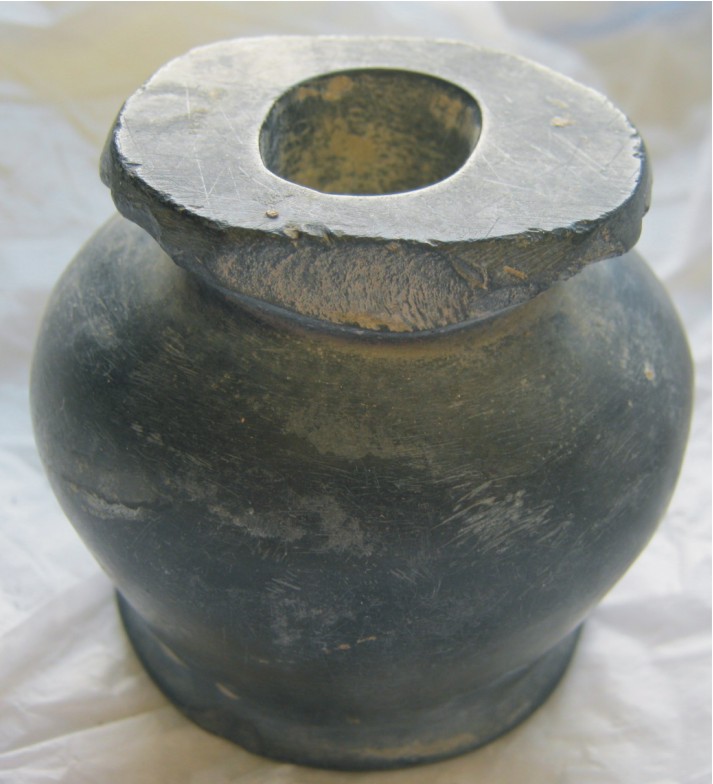W311
W311 Cosmetic vessel
 Cosmetic jar. 59mm high, dark stone with a broken rim. The shape shows that this dates to the New Kingdom. It is from Guy Brunton’s 1929 expedition to Mostagedda. It is described in Brunton, G. 193, ‘Mostagedda and the Tasian Culture’ London. A description on page 135 reads- ‘11712 female with infant beside her. Kohl pot (pl. lxxx, 9) on her chest’. There is a black and white line illustration of the vessel on plate 80 of that volume.
Cosmetic jar. 59mm high, dark stone with a broken rim. The shape shows that this dates to the New Kingdom. It is from Guy Brunton’s 1929 expedition to Mostagedda. It is described in Brunton, G. 193, ‘Mostagedda and the Tasian Culture’ London. A description on page 135 reads- ‘11712 female with infant beside her. Kohl pot (pl. lxxx, 9) on her chest’. There is a black and white line illustration of the vessel on plate 80 of that volume.
While stone cosmetic vessels were more often owned by the rich, this particular New Kingdom cemetery seems to have contained the burials of the non-elite. Such people comprised the vast majority which made up the population of ancient Egypt. They were labourers and wives of labourers. Women buried here would have spent long hours grinding corn and looking after the home. Their weaving often contributed significant funding to the family income.
The excavation report describing the grave containing this vessel does not give an estimation of the occupant’s age. However, she would have been considered old if she reached 40. We do not know how she and the child died, but death from childbirth was common and infant mortality high.
More items associated with ancient Egyptian women